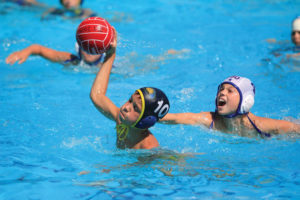Water Polo Scoring Big in Participation
Posted On: April 1, 2017 By :
While some sports may be struggling with participation and membership, water polo is not one of them, according to recent data released by USA Water Polo and the National Federation of State High School Associations (NFHS).
The national governing body, based in Huntington Beach, California, has seen membership grow 25 percent in the last five years, from 35,750 in 2011 to 44,773 in 2016, an all-time high. Although the sport has always had a strong base in California (about 72 percent of members are still from there), the sport is gaining in areas such as Utah, Illinois, Texas, Michigan and Oregon, where water polo is played at the club level.
And several factors at the youth level have Christopher Ramsey, the CEO of USA Water Polo, even more excited about the future. “In a relatively short time, water polo has become a very hot sport,” he said.
Event growth. Ramsey attributes the growth to several factors. For starters, the number of clubs offering people the chance to participate at a high level has been on the upswing for years. “Those people out running clubs have reached a new level of maturity in the way they’re operating their businesses,” Ramsey said. The sport is also seen as a healthy alternative to other sports, where players may be more prone to injuries, Ramsey suggested.
And the NGB’s largest event, the Junior Olympics, may also be playing a factor. That event includes 650 teams from across the country (typically 1,000 teams apply for entry) and is usually held in Northern or Southern California over eight days in July. Over the last 10 years, the NGB has focused on the event experience and has made moves such as ranking officials by performance, adding higher-quality equipment and increasing the number of games a typical team will play to eight or nine as opposed to five or six. Ramsey said that as word spread about the quality of the experience, more clubs began developing their talent, which has led to a larger and better pool of athletes.
Texas effort. High schools may offer the largest area for growth. According to the NFHS, girl’s high school water polo participation grew 7.9 percent over the past five years, while boy’s high school rates rose 5.5 percent. And that may grow even more as the University Interscholastic League, which governs high school sports in Texas, will consider adding water polo as a varsity sport later this year. If approved, it would be the first new team sport added since 1999. One key endorsement has come from the Texas Interscholastic Swim Coaches Association. “They recognized that swimming was a semester activity and bookending it with water polo would be a great thing for their athletes, schools and facilities to keep them humming through the whole academic year,” Ramsey said. “That was a bit of a game-changer.”
A growing base of strong younger players is having effects at the highest level of the sport, where the U.S. women’s team won Olympic gold in 2012 and 2016. The women’s goalie in 2016, Ashleigh Johnson, grew up in Florida, and Thomas Dunstan on the men’s team played in Connecticut—states that were not traditional hotbeds. “To me,” Ramsey said, “they’re another shining example of the sport moving into truly a national direction.”
Posted in: National Governing Body